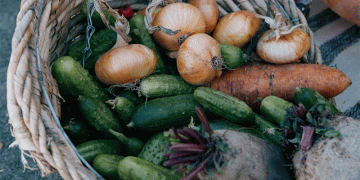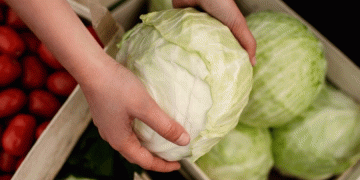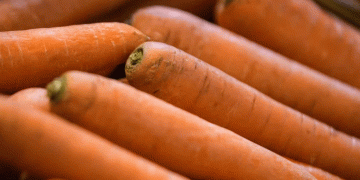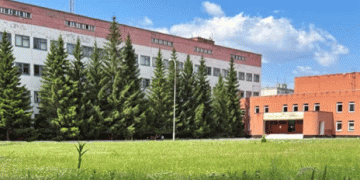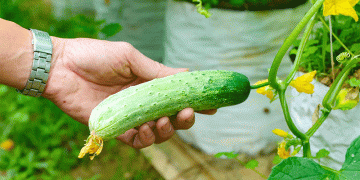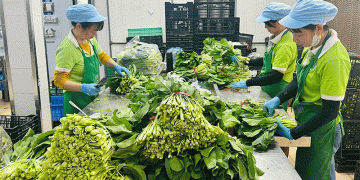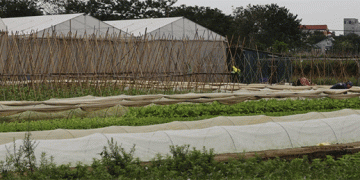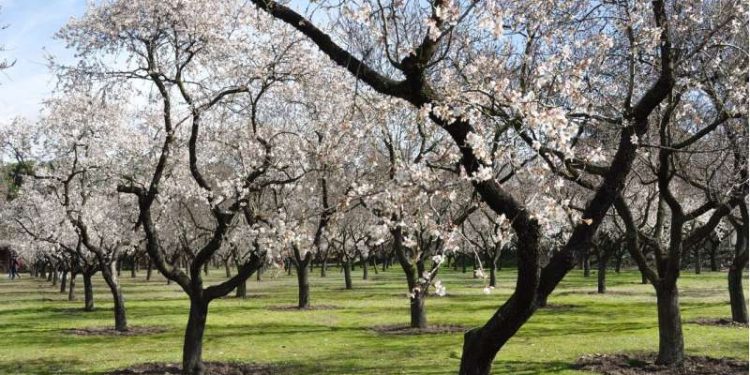As drought and climate change continue to wreak havoc on California’s water supply, an environmental advocacy group is calling on the state to limit the cultivation of thirsty crops like almonds and alfalfa, saying the agriculture industry is guzzling most of the state’s supplies at the expense of residents.
Large agribusinesses and factory farms—as well as oil and gas operators—are among the biggest water users in the state and should therefore be making greater sacrifices, argues a report by the nonprofit Food and Water Watch. The group is demanding that Gov. Gavin Newsom develop new water policies that stop the expansion of agriculture and fossil fuel industries, while making good on the state’s promise to provide clean, safe and affordable water to all residents.
“California needs to make fundamental reconsiderations and changes to our water infrastructure, and the governor currently has the authority to act immediately,” said Chirag Bhakta, the organization’s California director. “California is mired in long-term drought right now, and even though this is the case, the state still misuses billions and billions of gallons of water that go to the fossil fuel and big agricultural sectors.”
The report, released Wednesday, comes at a time when the state is feeling increasing pressure to reduce the amount of water it takes from the Colorado River, and as growers struggle with curtailments.
Authors of the report found that expanded acreage for nut crops like almonds and pistachios used 520 billion gallons more water in 2021 than in 2017, indicating that expansion is happening despite tightened water supplies. That’s enough to supply more than 34 million people, or nearly 90% of California’s population, for a year, the report said.
The Food and Water Watch report also found that alfalfa uses an average of 945 billion gallons of water annually, and that mega-dairies consume more than 142 million gallons per day to maintain their cows, while oil and gas companies spent 3 billion gallons between 2018 and 2021 for drilling operations.
Andrew Ayres, a research fellow at the Public Policy Institute of California’s Water Policy Center, said that it’s fair to point out the agriculture industry‘s consumptive water use, but that “it’s also important to remember all the benefits that we get from using water in these applications.”
California grows more than 80% of the world’s almonds and a large portion of the nation’s fruits, vegetables and other nuts.
“Especially in winter, California is producing the majority of things like lettuce and other leafy greens that otherwise would be very difficult to get your hands on through the year,” he said.
Steve Lyle, a spokesperson for the California Department of Food and Agriculture, said in an email that a “culture of conservation” has driven the state’s agriculture for decades.
He cited data from the Department of Water Resources showing that farmers and ranchers used 14% less water over a 35-year period while increasing yields by 38%, and that in the span of 20 years, almond growers lowered the amount of water used to grow a pound of almonds by 33%.
The industry is “committed to achieving another 20% reduction by 2025,” he said, adding that “water-efficient micro-irrigation is currently utilized by 85% of California almond farms.”
As for dairy farms, water used for milk production shrank by 88% over a 50-year period, Lyle said.
Although agriculture represents only about 3% of California’s gross domestic product, it provides about 11% of the nation’s food supply, more than any other state. California is also the nation’s primary producer of several crops, including almonds, artichokes, olives and walnuts.
But agriculture is also a thirsty sector, accounting for about 80% of the state’s water allocated for human consumption. While that sounds like a huge share, it’s not unique to California, said Thomas Harter, a professor in the Department of Land, Air and Water Resources at UC Davis.
“Any place in the world where you have irrigated agriculture, that will be the dominant water user, just because of the nature of growing foods with irrigation,” he said.
In California, most of that water comes from underground aquifers, which the state relies on more heavily during dry years. The overpumping of groundwater in some parts of the state is drying up wells in record numbers, causing the land to subside and harming wildlife and ecosystems.
In response to the problem, the state in 2014 passed the Sustainable Groundwater Management Act, which is intended to regulate the amount of groundwater pumping in California. But the timeline for implementation spans more than two decades, which has led to a frenzy of well drilling by many hoping to tap into supplies before they’re cut off.
Authors of the report say that timeline “falls far short of protecting groundwater by delaying action until 2040.” They argue that SGMA puts industry before people. “Low-resource households, people of color, and communities already burdened with environmental injustices are more likely to face severe drought impacts and water shortages,” they wrote.
Lyle said that SGMA is already being implemented and that the Department of Water Resources has required groundwater sustainability agencies submit plans to protect drinking water for vulnerable communities. Water agencies must meet their sustainability goals within the 20 years, he said.
The report also looked at the dairy industry, whose products represented the state’s highest amount of agricultural cash receipts in 2021 at $7.57 billion, according to the Department of Food and Agriculture.
Harter said there’s no doubt that animal-based foods, on the whole, have a larger water footprint than plant-based ones.
“I’m not advertising against animal products, but I think the more important part is to find, in the long run, a better balance between (the two) that allows us to be sustainable, not just in California but across the world,” he said.
Like dairy, a lot of crops grown in the state are sent overseas. According to the report, more than half of the state’s almonds are exported, equating to about 800 billion gallons of water per year. Alfalfa too is often exported, with about 35% of California’s hay products sent abroad in 2020.
While alfalfa requires a lot of water to grow, it has a high return based on how much water is applied, said Daniel Putnam, a cooperative extension specialist at the University of California, Davis who focuses on alfalfa. The plant’s deep root systems are also good for soil health.
But he acknowledged that the method of growing the crop, which is most often through gravity-fed irrigation flood systems, could be improved “through more careful irrigation systems” and by increasing yields.
“This is why growers have been working on overhead irrigation, they’ve been working on subsurface drip irrigation, and in my book, all of these hold a lot of promise,” he said.
But while there is room for improvement, Putnam emphasized that agriculture uses a lot of water because it takes a lot of water to grow almost anything.
“Even with urban water use, the majority is for landscaping, the majority goes to plants,” he said. “And there’s a reason for that—plants need lots of water, and that’s just the way it is. … Food systems require water.”
The recommendations the report outlined for Newsom and state agencies include ending new gas and oil drilling and banning new mega-dairies; ensuring that water rights and allocations benefit the public; and strengthening groundwater protections.
At the federal level, it urged Congress to pass laws such as the Water Affordability, Transparency, Equity and Reliability Act that would “fully fund our water and wastewater systems, put water systems back in the control of the public, help ensure water access and affordability, and restore the commitment of the federal government to protecting water.”
Bhakta said California’s water supply issues call for a rethinking and restructuring of how water gets used in the state. “Our main point is that we need to put everyday Californians before the profits of fossil fuel companies and big agricultural corporations.”
A source: https://phys.org















